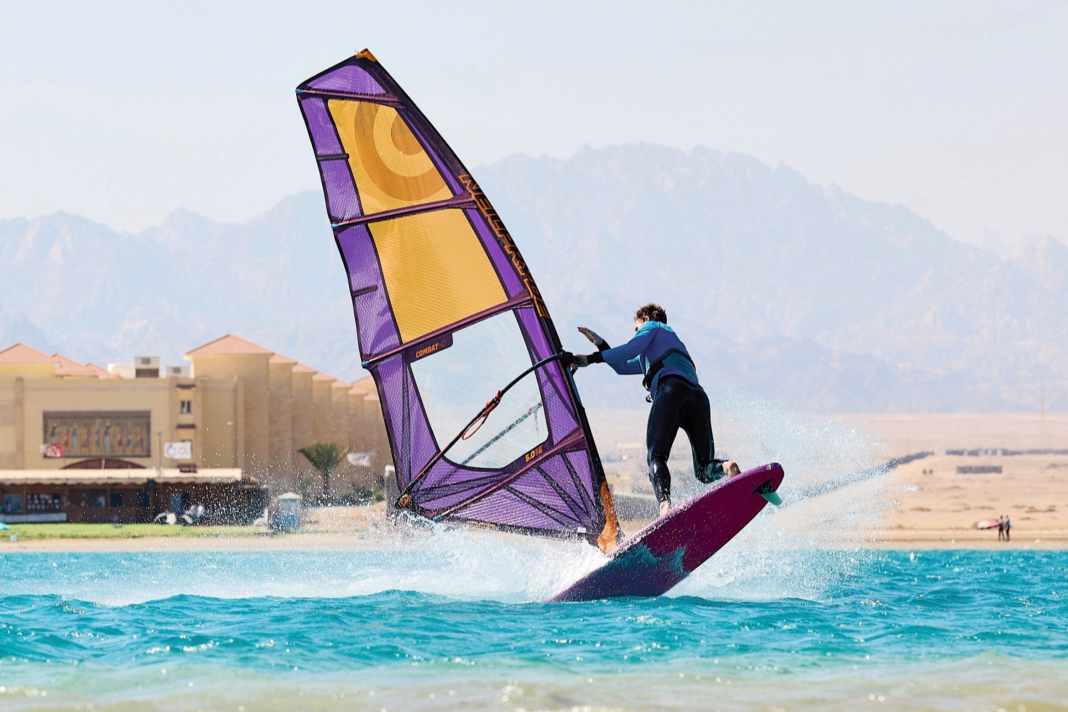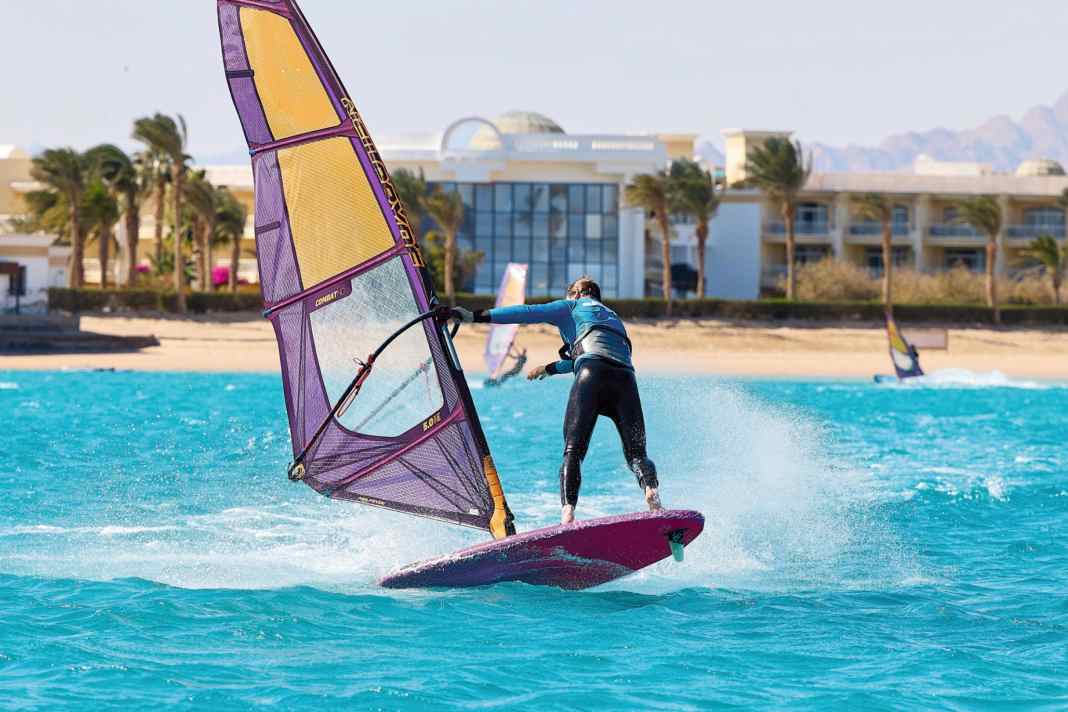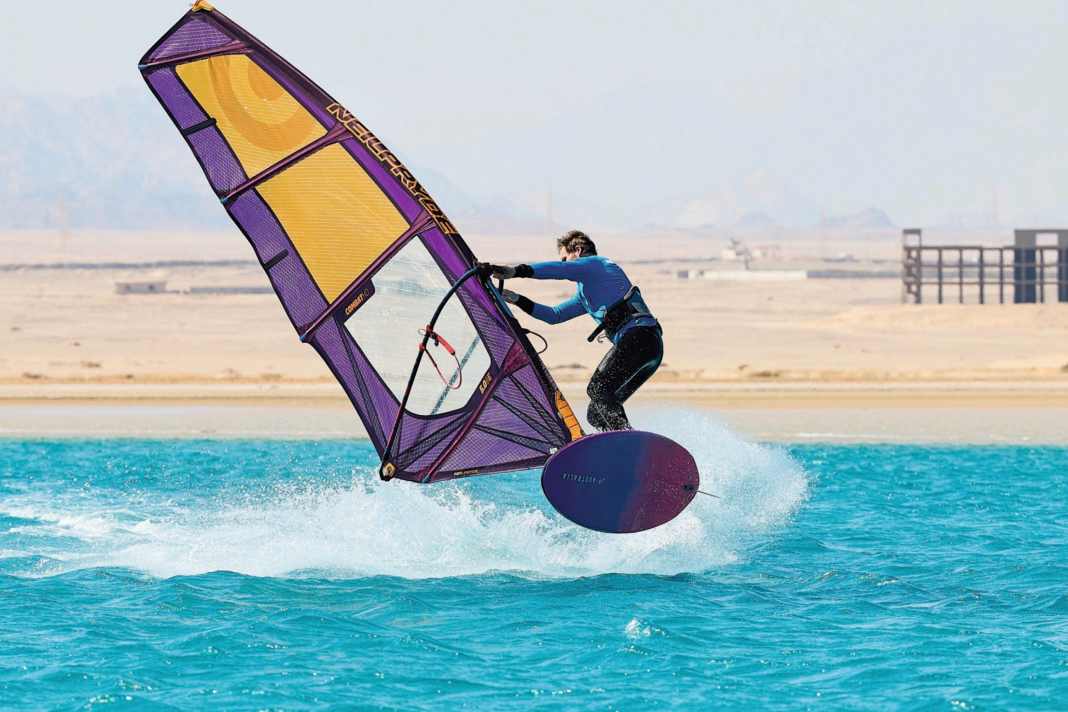





The freestyle wave got rolling in the mid-90s with the "King of the Lake" contest on Lake Garda. Legends such as Robby Naish, Jason Polakow and Robby Seeger were at the forefront, celebrating carving 360s, spin loops and Willy Skipper on flat water. But in 1997, a new move hit like a bomb: the Vulcan, also known as the "air jibe", heralded a new era in windsurfing, in which the spectacle came to flat water.
Just one year later, Josh Stone shot the first Spocks - literally a "further twist" of the Vulcan - went on to win two world championship titles - and was soon overtaken by the new freestyle hotshots around Kauli Seadi, Ricardo Campello and the Frans brothers on the right. However, the tricks with which they crowned themselves king of Lake Garda more than 25 years ago are still not old hat today - we show you all the highlights of the freestyle classic Vulcan!
More Freestyle Basic Tutorials:
Requirements for the Vulcan
You can put the Vulcan on your to-do list as soon as you have mastered normal jumps on flat water or over small choppy waves. Wind conditions between 20 and 25 knots are ideal for practising. Due to their compact dimensions and voluminous tails, boards in the freestyle category are particularly suitable, but the Vulcan also works well with all-round boards in the freestyle wave or freemove class. Incidentally, the move was invented by wave specialist Sean Ordonez, who enjoyed celebrating the Vulcan over steep ramps and at a height of three metres.
The Vulcan is not a jumped 180-degree turn. In fact, the board turns significantly less in the air."
The four phases of the Vulcan
The jump
Pick up enough speed on a half-wind to light space wind course and aim for a small chop. One of the most common mistakes often happens before the actual move has even started, because before you jump off you should move the front hand on the boom completely forwards towards the mast. This is the only way to change the side of the sail quickly in the air - more on this in a moment. Give the tail a little push to bring the nose of the board up.
surf tip: Are you having problems getting up to altitude and getting stuck? Then try making a small turn to windward immediately before jumping off the space wind course!
Shifting in the air
The fact that the Vulcan is also called an "air jibe" is clear from the pictures, as the aim is to turn the board in the air and change the side of the sail during the jump. And this is how it works: Immediately after the jump, release your back hand from the boom and pull the sail towards your body with your front hand to grab the other side of the sail "boom to boom" using a cross grip. Important: Don't actively try to kick the tail away, but pull the tail under your body with your back leg. This causes the nose of the board to enter the water and the bow becomes the centre of rotation.
Sliding
The trick with the Vulcan is not to turn 180 degrees, but less - 120 or 130 degrees is sufficient. With the bow as the pivot point, the tail then continues to rotate until it is half-wind. Immediately after the cross-handle, use the mast arm to push the sail towards the bow, which keeps the upper body in the required position and the board slides on the bow.
Restart
Hold the slight forward body position until the sail is sheet in on the new side, only now does the backwards slide end. The only thing left to do now is to release the twisted foot position (switch stance). To do this, first pull the back foot out of the strap and place it forwards.
We show you all the steps of the Vulcan in the gallery above!
The most common faults with the Vulcan/Air Jibe
Mistake 1: Focus on the board




Anyone learning the Vulcan usually concentrates exclusively on turning the board - the arms are often forgotten. The result is that the sail hangs in the water to leeward when sliding backwards (see sequence above), the change of grip has not yet taken place. surf tip Concentrate primarily on the change of grip and on pulling the mast close to your body to reach round. You will see: The board usually rotates automatically as you turn your upper body as a result of the change of grip.
Error 2: Missing template




If you regularly slap your back on the Vulcan, the problem is a lack of support. The aim is to lean your upper body towards the bow so that the fin stays above the water and the board slides on the bow. But how do you get into the right position? The key lies in the front arm. If you bend your front arm after the cross-grip and pull the mast towards your body, you're bound to hit your back (see sequence above). Instead, try to extend your front arm and keep the pole at a distance. This will automatically shift your weight over the top of the board.

